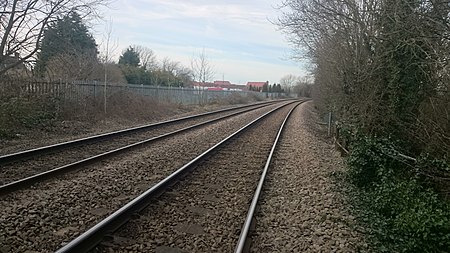Anston railway station
1912 establishments in EnglandDisused railway stations in RotherhamPages with no open date in Infobox stationRailway stations in Great Britain closed in 1926Railway stations in Great Britain closed in 1929 ... and 3 more
Railway stations in Great Britain opened in 1912Railway stations in Great Britain opened in 1927Use British English from September 2017

Anston railway station was situated on the Great Central and Midland Joint Railway line between the villages of North Anston and South Anston near Rotherham and Sheffield, South Yorkshire, England. Passenger services on the line, which came under the control of the South Yorkshire Joint Committee began on 7 December 1910 and were jointly operated by the Great Central Railway and the Great Northern Railway. The Great Northern Railway left this arrangement after just one year leaving the G.C.R. to offer a service between Doncaster and Shireoaks. This service was extended to Worksop in 1920 in an attempt to increase passenger revenues.
Excerpt from the Wikipedia article Anston railway station (License: CC BY-SA 3.0, Authors, Images).Anston railway station
Wilberforce Road,
Geographical coordinates (GPS) Address Nearby Places Show on map
Geographical coordinates (GPS)
| Latitude | Longitude |
|---|---|
| N 53.352056 ° | E -1.22525 ° |
Address
Wilberforce Road
Wilberforce Road
S25 5EG , Anston
England, United Kingdom
Open on Google Maps








